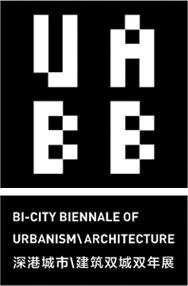2013 Bi-City Biennale of Urbanism\Architecture (Shenzhen)
6 December 2013–28 February 2014
Opening week: 5–8 December
5 December: press conference and media tour
6 December: opening ceremony
The 2013 UABB(SZ) theme, ‘Urban Border,’ explores the possibilities of urban culture, urban space, urban lifestyle and related issues. As urban development occurs at an unprecedented rate, a kind of generic similarity dominates. Diversity, difference and individuality are relegated. At the multiple formations of ‘border,’ however, we might discover margins of urban space, brink groups, and non-mainstream lifestyles.
This year’s exhibitions will be particularly fascinating as the biennale has reclaimed two neglected industrial sites in the Shekou, Nanshan district of Shenzhen, transforming them into cutting-edge exhibition spaces.
Venue A is the former Guangdong Float Glass Factory, derelict since 2009. The effort was supervised by UABB(SZ)’s Curator and Creative Director, Ole Bouman. With his manifesto statement of “Biennale as risk,” the revitalization has provided a unique and functional venue while preserving a piece of heritage and history. Bouman’s broader objective is to redefine Shenzhen’s identity with an urban intervention, turning the site into its own exhibit—a ‘Value Factory’ to manufacture ideas and knowledge. The exhibit brings together world famous cultural institutions to transform the Glass Factory into a place of cultural activity.
Venue B, an abandoned old warehouse at the Shekou Ferry Terminal, will host a significant portion of the exhibitions. For this space, Curators, Academic Directors Li Xiangning and Jeffrey Johnson merged architectural, socio-cultural and artistic interpretations, observations and speculations in exploring the dynamic and charged urban boundary conditions around the world, in China and the Pearl River Delta. The five-part exhibition will document critical themes pertaining to urban borders, offer analysis of the historical evolution of borders, and explore contemporary theoretical interpretations of what a city means today and in the future.
Between both venues a two-kilometre-long connecting road, curated by Ole Bouman, serves as a journey from the “past” into the “future.” It takes visitors along many other opportunities for urban renewal in Shekou.
Beyond exhibitions, the UABB is a public education platform. The new program “UABB School” will integrate resources and further strengthen the role of education. The program is eager to interact with local citizens from various fields and professions and hold a series of free programs/activities for citizens during the exhibition.
The program highlights of “UABB School” include public and professional events, such as openings by DROOG, Studio X, the V&A, OMA, MIT, Atelier Bow-Wow, the International Biennale Sao Paulo and many others. Lively debates will be held such as a V&A mini-symposium, Studio X debate on architectural implications of the Olympics, the future of architecture education and MOMA mini-symposium.
Promoting innovation in architecture and urban planning, the UABB not only seeks to bring academic accomplishments into the spotlight but also to look beyond current global trends towards the future.


